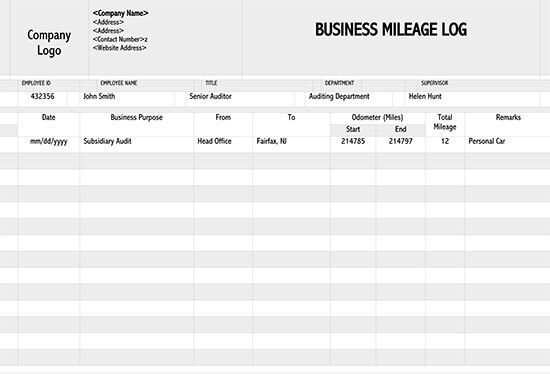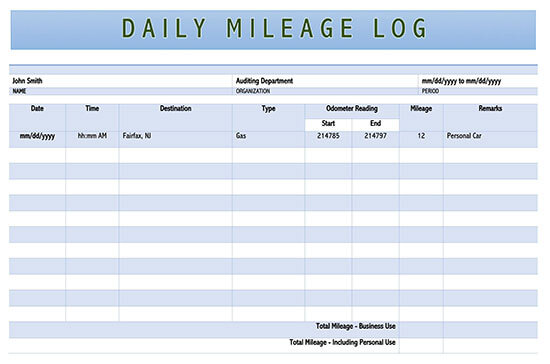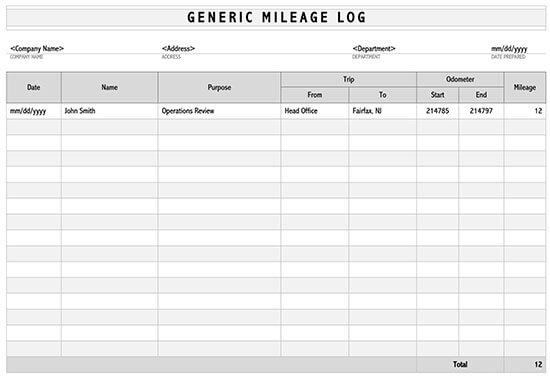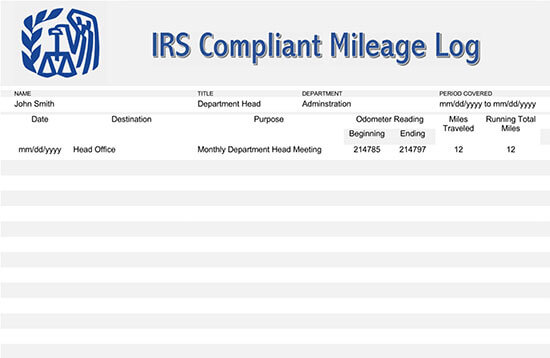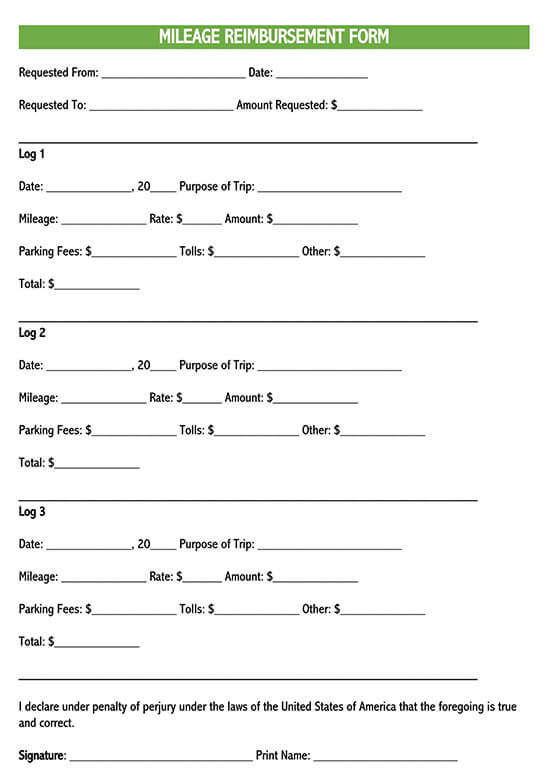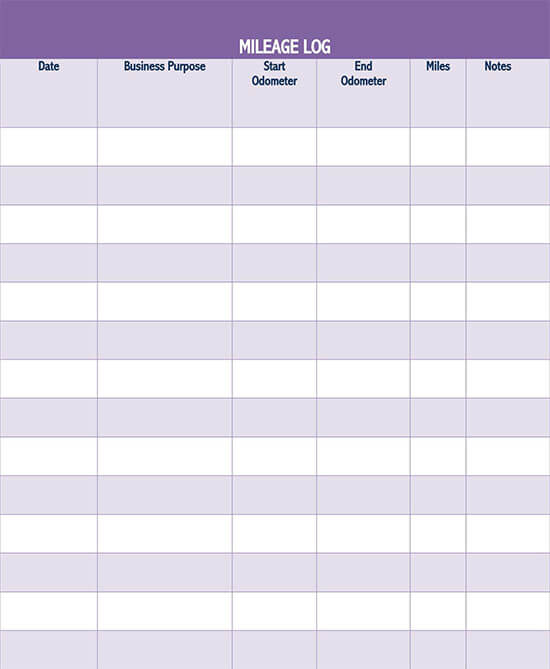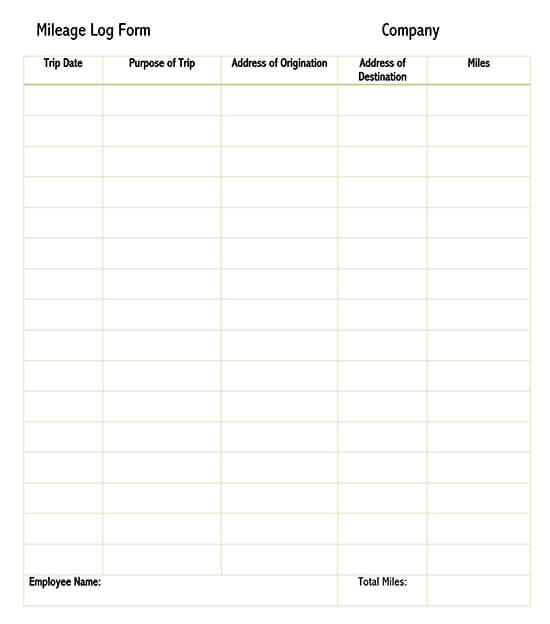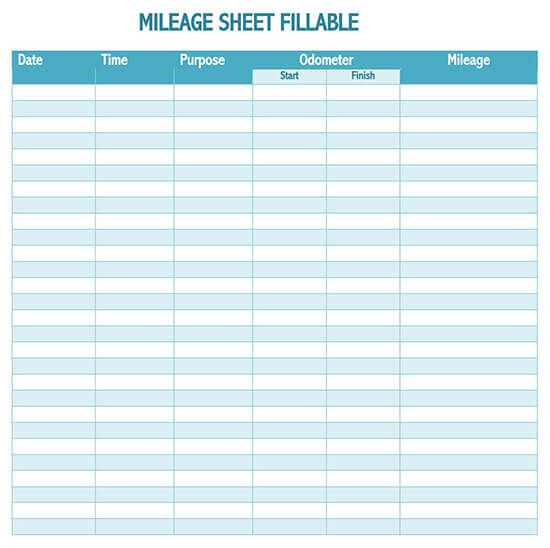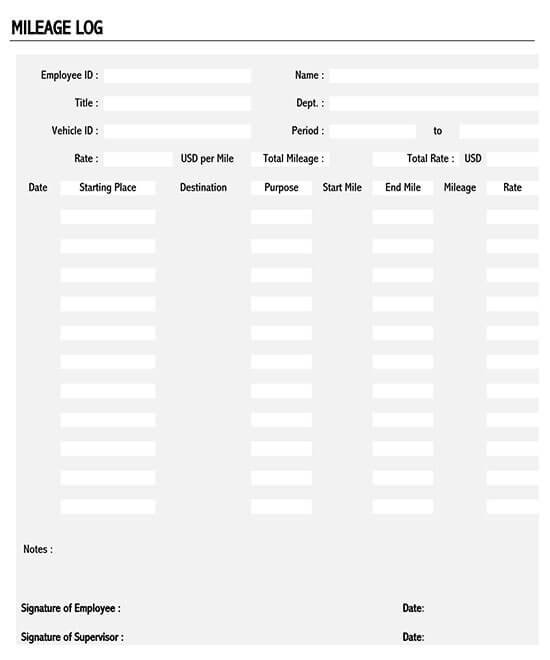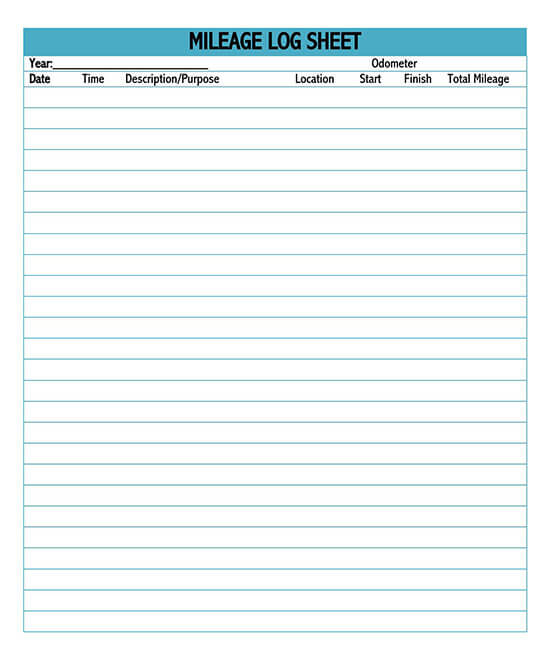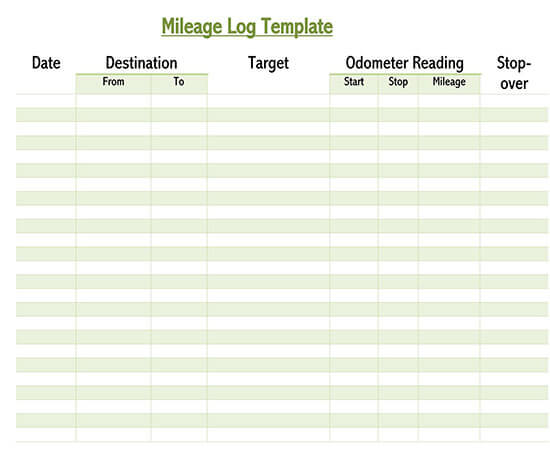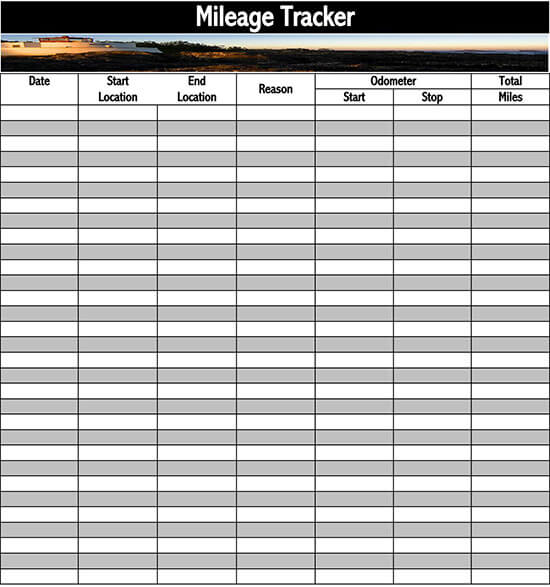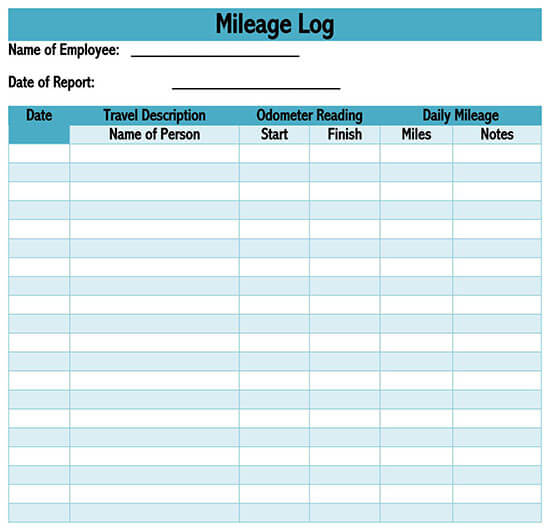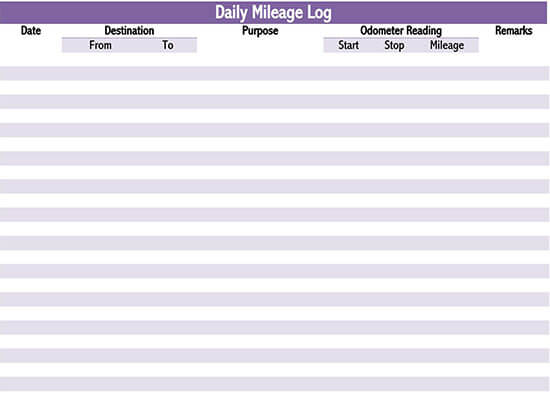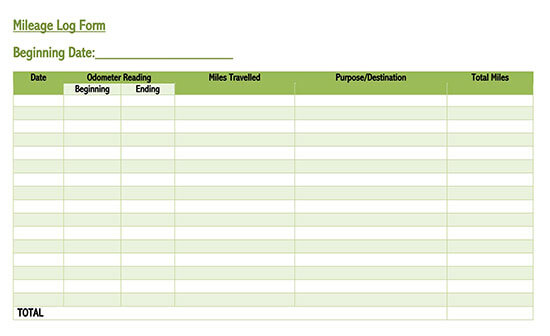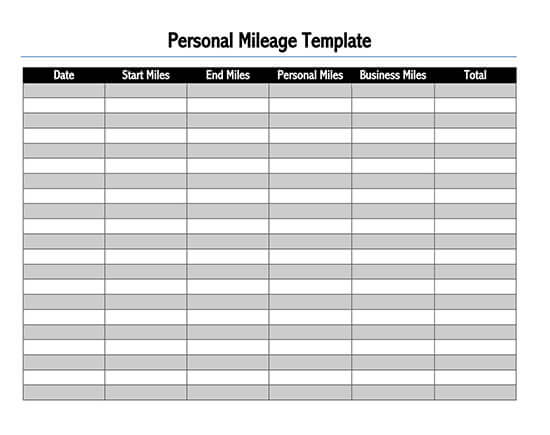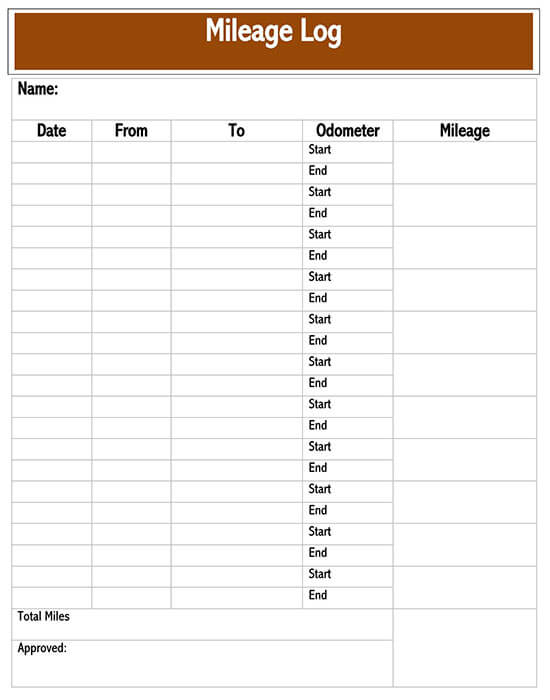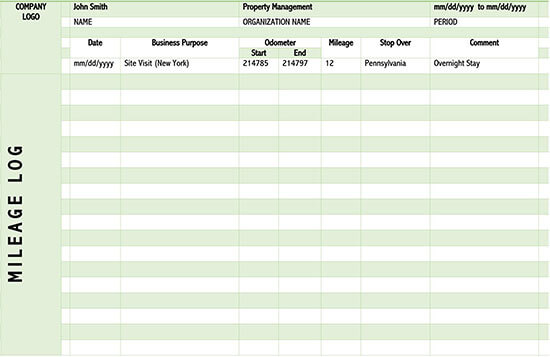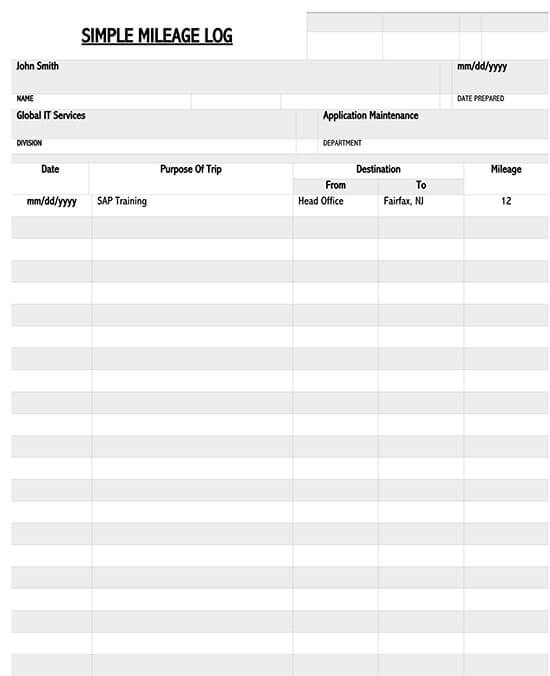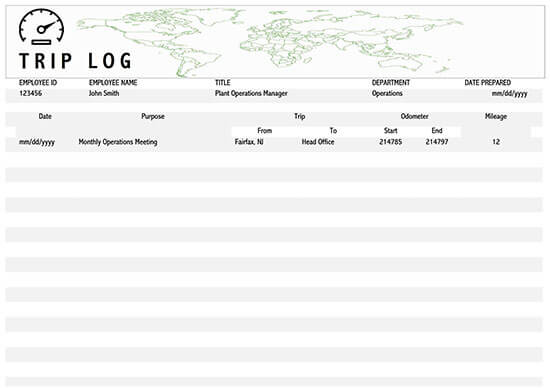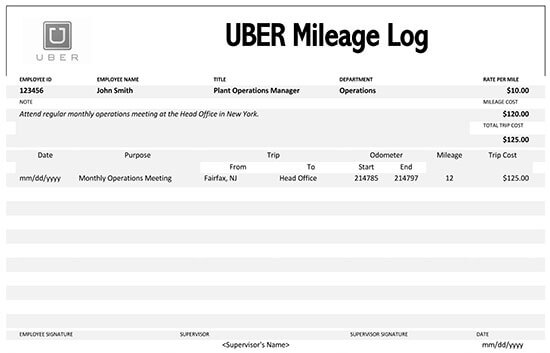IRS Mileage reimbursement form is a document used by employees seeking reimbursement for using their vehicles to conduct official business.
Some of these employees include delivery drivers or rideshare, freelancers, real estate agents, service workers, and many more, mainly self-employed business people. As there is no accurate way of determining the actual cost of the trip the employee takes, the Internal Revenues Services (IRS) provides mileage reimbursement rates annually for businesses and employees.
IRS mileage rate represents the amount of money one incurs per mile that the IRS allows businesses/ employers to reimburse their employees for outings/drives made using a personal vehicle. This rate is fixed for all vehicles, whether electric or petroleum-fueled.
There are various ways one can track their IRS mileage which include;
- Manual logbook which involves writing down every business-related drive and expense and can be quite tedious.
- Printable mileage tracker form or spreadsheet or ready-made templates
- Mileage tracker apps such as vertex42’s mileage tracker
IRS: Topic 510 – Business Use of a Car is the official IRS publication on business-related mileage deductions. It outlines the two distinct methods of making your deductions: the Standard Mileage deduction and the Actual Cost deduction method. You can refer to it to understand further IRS guidelines and requirements. The mileage rates provided by the IRS for business, moving and charity, and medical reimbursements are listed on the Official IRS Publication of the Standard Mileage Rates.
Why you Must Keep a Mileage Log
A mileage log records all the miles a vehicle covers when traveling for business in a given period. This data is usually recorded in a mileage tracking form, spreadsheet, logbook, or online application. So, why do you need a mileage log?
One, a mileage log is used to claim reimbursement from your employer and help make mileage deductions when filing for taxes. Recording your mileage ensures that the deductions you make at the end of the year are accurate and thus protect you in an IRS audit.
A mileage log also indicates other deductible miles such as medical, charitable, or miles traveled.
Travel expenses are not just the money you take out of your pocket towards the travel but also include other virtual expenses. The mileage rate is expected to cover all these expenses. Therefore, the IRS considers the following factors when determining the mileage rate.
These Reimbursement Rates are inclusive of:
Depreciation
Depreciation measurement is the measurement of the decline in the value of your vehicle. Every time your vehicle is used, its value continues to decrease as time goes on.
Fuel
As vehicles require fuel to work, the IRS considers the price of fuel when setting the mileage rate. Fuel includes electricity used to drive electric cars.
Oil changes
After attaining a specific mileage, a vehicle requires an oil change. When setting the mileage rate, the IRS ensures that the cost incurred to change the oil after a mile is considered.
Vehicle expenses like registration
Owning and operating a vehicle requires the owner and driver to have certain documents, which come at a cost. Some of such documents include insurance, registration, etc., done after a given period.
Maintenance
For a vehicle to remain operational, it must be maintained and usually go for servicing after a mile coverage. Costs that you incur for servicing are also covered in the mileage rate.
Charity and other business use
Sometimes you may use your vehicle for things like medical emergencies, which are travel expenses that your employer can reimburse you, so therefore it is included in the mileage rate to be deducted from your tax returns.
Costs that are Not Reimbursed
Not all expenses incurred when traveling are included when determining the mileage rate.
These exceptions include;
- Food: when making your trips, you are bound to have meals on the road, such as lunch or snacks. The cost incurred for meals is not incorporated in the annual mileage rate.
- Lodging: sometimes, while still on business, you can make long trips that force you to take a rest in lodgings. Lodging charges are not part of the expenses to be covered by a mileage rate.
- Parking fees: any parking fees incurred during the travel are not catered for in the mileage rate.
- Tolls: When paying toll fees, this expense is not considered when determining the annual mileage rate.
For these categories of expenses, you can agree with your employer on how to be reimbursed. It is, however, not their obligation unless agreed otherwise.
Information Needed to be Included in your Mileage Log
When tracking your mileage, you must do it correctly, as inaccurate recording can cost you money or, worse legal action if you filed for more mileage deductions than you are eligible for. Therefore, for people who often use their car to run or carry out official business duties, it is essential to have accurate mileage data as this saves them money at the end of the year.
To comply with the IRS regulations and guidelines for mileage tracking, your mileage log should include the following information;
- The specific dates you took the business trip(s).
- The purpose of each trip recorded, e.g., delivery, etc.
- The starting point of every trip.
- The final destination of each trip made
- The initial/starting mileage on your car is the reading at the starting point.
- The ending mileage on your car. Mileage covered on detours to make personal or business-unrelated errands should not be included.
- Any tool fees paid on the road, car parking fees, vehicle insurance, fuel, and any other business-related costs incurred during your trip.
With this information, your employer can reimburse you accordingly, and you can calculate your tax deductions a bit more accurately.
Rates to Consider While Keeping Track
Regardless of the type or size of the business or company one works for, it is important to keep mileage records should one be required to fill in a reimbursement form or get deductible business-related expenses reimbursed. Mileage expenses are deductible while filing for your tax returns. Now, why is mileage reimbursed or tax-deductible? This is because all those miles can be transformed into money and represents incurred costs on the employee’s side.
Gathering all the data can be time-consuming, but despite all the workload, it is worth it. You can do so by writing down the costs/expenses in your vehicle logbook as you go about your business.
However, there are a few methods and techniques to maintain IRS mileage costs for employees that are discussed further in this article. But before considering the methods, it is essential to keep in mind the cost limits allowed to all employees.
Some of the rate limits allowed for employees for previous years that you must consider while keeping track of IRS mileage & other IRS business costs are provided below;
| Year | Business | Charitable organization | Medical and moving |
|---|---|---|---|
| 2020 | $ 0.575 | $ 0.14 | $ 0.17 |
| 2019 | $ 0.58 | $ 0.14 | $ 0.20 |
| 2018 | $ 0.545 | $ 0.14 | $ 0.18 |
| 2017 | $ 0.535 | $ 0.14 | $ 0.17 |
For the year 2021(current), the IRS mileage rates are as follows;
- Business- $0.56
- Medical or moving- $0.16
- Charitable organization- $0.14
Tips for Mileage Tracking
While carrying out your routine business duties, mileage tracking can take up your time, time that you would prefer to use to do something else. Therefore, to ease the mileage tracking process for yourself, there are a few things you can do.
Below are some tips we think would go a long way in helping you track your mileage effectively:
- It is recommended that you seek the assistance and counsel of tax professionals for complex situations or in case you are not sure of how to go about it.
- It is important to understand that mileage covered when going and coming from work is not deductible, so it should not be included in the log.
- One should ensure that they do not mix the Actual Expense and the Standard Deduction methods.
- Include any relevant details about your trip in your log for future reference. This can include purpose, people visited, and locations. This information might be important during auditing.
- When switching between the Actual Cost and the Standard Mileage deduction methods, there are rules that you should familiarize yourself with and follow.
- Always familiarize yourself with what you can or cannot deduct from your taxes. For example, if you are being reimbursed under an accountability plan, that is, your reimbursements are not on your W-2, you are not permitted to make mileage deductions. However, if your reimbursements are covered in your W-2, you can then make mileage deductions provided you follow the rules and limitations given.
- In cases where you fail to record the actual mileage during your trip, it is advised that you make an educated guess supported by additional information. For example, one way to estimate mileage is through a web-based mapping system.
Considerable Pros & Cons
Each of the three methods of mileage tracking has its pros and cons. These methods have evolved over time in order to make them more convenient and easier to use. Below are some of the advantages and disadvantages of using these methods.
Manual logbooks are a cheap method to use as it involves the old-fashioned pen-and-paper way of recording data. However, using manual logbooks can be tiring due to the workload involved in remembering to track every specific drive. Also, manual logbooks can easily get lost.
For printable mileage tracker forms such as a spreadsheet, they are easy to use when doing calculations as you can use formulas that automatically give you the amount to be reimbursed or deducted from taxes. The disadvantage or con of using this method is that just like with manual logbooks, you still have to remember to enter your mileage after every drive with your car and enter it in your computer once again when you get home.
The mileage tracker apps are the most advanced method of tracking your mileage. The advantage of using this method is an app helps you by automatically logging and calculating your miles. Additionally, it synthesizes an IRS-compliant report that you can export/download to use while doing your taxes or being audited for taxes.
Free Templates
Conclusion
As an employee or businessperson, you will often be required to use your vehicle to attend official business meetings or carry out official business errands. These trips will always come at a cost. Your employer can reimburse these expenses, or you can make mileage deductions when filing your taxes. To ensure that you have accurate figures, you need to record the number of miles covered during your trip. This can be done through several methods; manual logbook, printable mileage tracker forms, or mileage tracker apps.
Ordinarily, a mileage log should contain the following information: trip date, purpose of the trip, starting and ending point, initial and final mileage reading, and other additional expenses incurred during the trip. Always familiarize yourself with the IRS guidelines before making mileage deductions on your tax returns. The amount to be deducted is calculated using the IRS mileage rate. It is important to note that this rate does not cover food, lodging, tolls, and parking fee-related expenses
